UK: Cretan Spurge Hawkmoth, D: Kreta-Wolfsmilchschwärmer.
Hyles cretica Eitschberger, Danner & Surholt, 1998, Herbipoliana 4(1): 251.Type locality: Crete.
(Taxonomic note. Initially, Hundsdörfer, Mende, Kitching & Cordellier (2011) were of the opinion that all modern-day mtDNA haplotypes of Hyles 'cretica' formed a discrete lineage that clustered between the 'italica' lineage characteristic of the Hyles euphorbiae (Linnaeus, 1758) population found in Italy and Sicily south of the Po River, and true Hyles tithymali (Boisduval, 1834). On mtDNA alone, it was sufficiently different from both to be considered a distinct species, although more closely related to Hyles tithymali. However, Mende & Hundsdörfer (2014) subsequently sequenced the few available historic specimens from the Aegean Islands and also found a specimen from Crete which belonged to the Hyles euphorbiae cluster. They thus concluded that the southern Aegean population (and that from southern Italy) are dynamic hybrid mixtures of the European Hyles euphorbiae and North African Hyles tithymali, rather than separately evolved taxa. Therefore, the taxon 'cretica' is not valid, but the name is a useful label for the Cretan and Rhodes population.)
[Further details on this taxon, as well as photos of all stages, can be found on Lepiforum.]
Holarctic; western Palaearctic region. Pleistocene refuge: Monocentric -- Crete (Mediterranean refuge).
Wingspan: 69--80mm. Similar in coloration and pattern to some individuals of Hyles tithymali mauretanica (Staudinger, 1871) from Morocco.
Unlike in Hyles euphorbiae, where females usually call and mate between 22.00 and 24.00 hours (Harbich, 1994), and Hyles tithymali, where females call and mate between 01.30 and 03.00 hours (Harbich, 1994), females of Hyles 'cretica' call and mate towards dawn (Michael Mende, pers. comm 2011). In this way it has managed to remain somewhat reproductively isolated from the other two species.
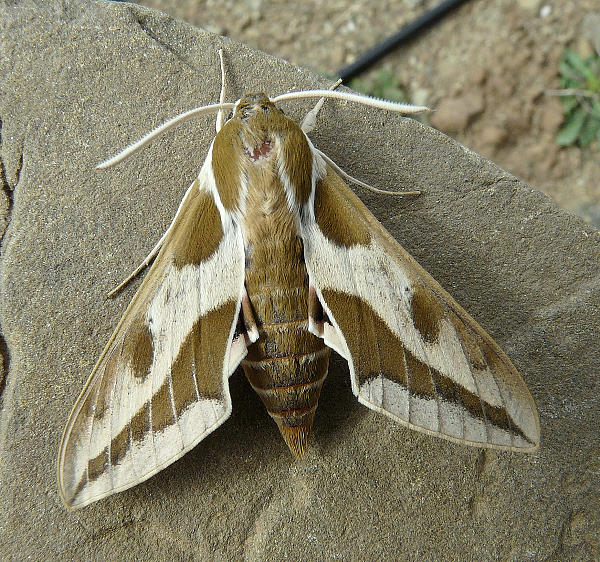
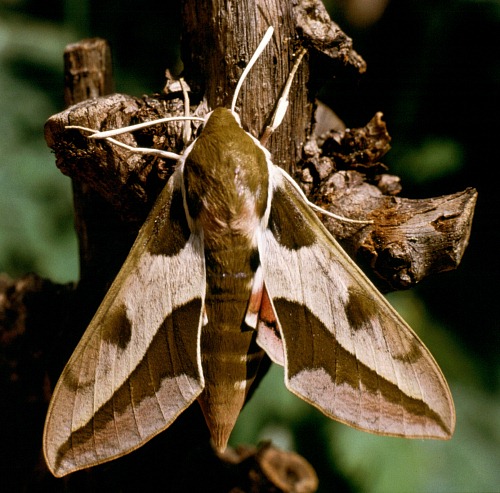
An inhabitant of arid hillsides with a good growth of Euphorbia.
So far as is known, February to October in a number of broods. May be continuous-brooded.
OVUM: Similar to that of Hyles tithymali tithymali, i.e. small, very hard and blue-green in colour. Laid in large clusters on the growing tips of the hostplant.
LARVA: Full fed: 75--85mm. In the third and fourth instars the larva looks similar to that of Hyles tithymali mauretanica. Full-grown larvae also look similar to that subspecies; however, in behaviour it is very similar to that of Hyles tithymali tithymali.
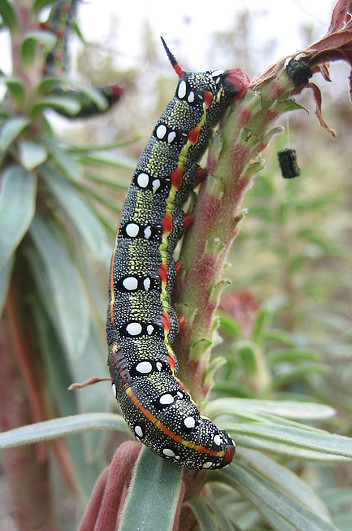
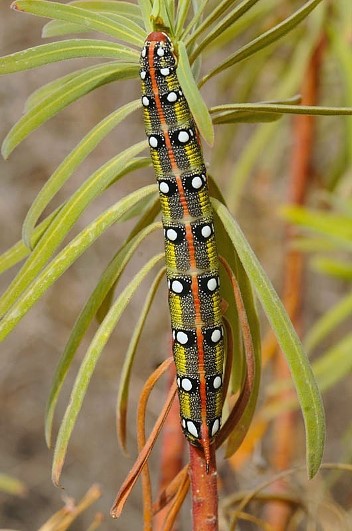
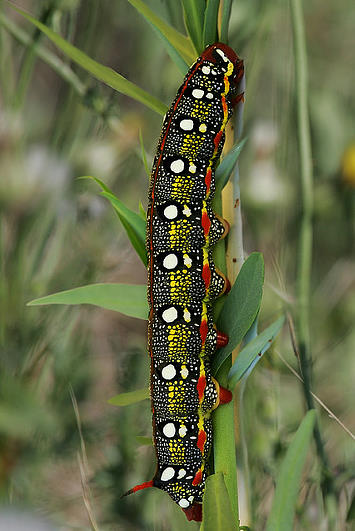
Occurs from March to December.
Hostplant. Euphorbia spp.
PUPA: Indistinguishable from Hyles tithymali tithymali. Overwinters as a pupa. [Very sensitive to elevated humidity and stale atmospheric conditions during storage.]
None recorded.
Confined to the islands of Crete, Rhodes, Chalki and Samos (Danner, Eitschberger & Surholt, 1998; Fritsch, Stangelmeier, Top-Jensen & Bech, 2014).
Extra-limital range. None.
 Return to species list
Return to species list